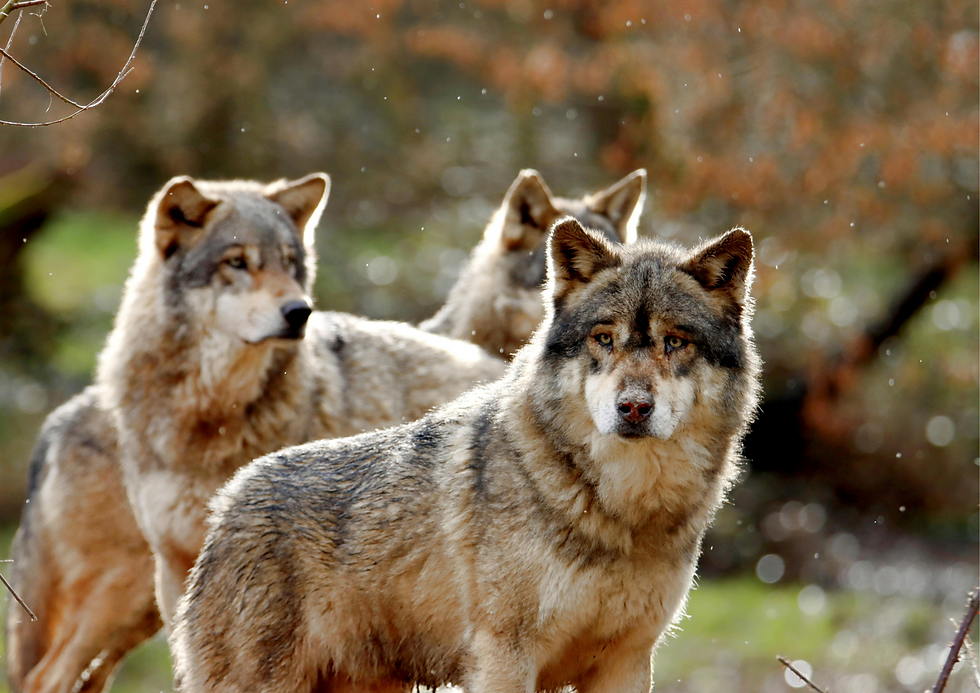The Three Biggest Changes I’ve Seen in Animal Reiki
- Mar 12, 2020
- 4 min read
When I started practicing Animal Reiki (AR) back in the 90s, I couldn’t find any AR teachers to study with. Most human Reiki teachers just added a sentence in their classes to say something like, “Animals can also benefit from Reiki sessions.” Because of this, and in addition to dedicating myself to many years of human-based Reiki training, I found myself volunteering as many animal Reiki sessions as possible. I searched for as many varied locations and as many varied species as possible, in order to find the answers to my many questions of AR through the only path open to me at the time: practical, in-the-field experience with animals. I’m so grateful to all the animals who have patiently taught me the proper etiquette of Reiki with animals (and who have forgiven my many well-intentioned mistakes) over the past 22 years! As we move into a new decade, I’m taking stock of where our profession is today. I’m so happy to see AR becoming very mainstream in the Reiki community. Even most Reiki organizations are adding it into their professional qualifications. There are more AR courses than ever before. AR is now offered as a holistic support in veterinary clinics, animal shelters, sanctuaries, doggie day cares and even dog-friendly hotels around the world.

Sharing Reiki with one of my first horse clients.
The three biggest changes in the Animal Reiki profession I’ve seen since I began practicing in 1998 are:
1) There is a huge variety of Animal Reiki classes now available
This is exciting because it shows that thousands of people are actively practicing AR in their community and wanting to share this knowledge with others. Many however incorporate the use of non-Reiki based therapies such as crystals, chakra-based healing and animal communication, which can cause confusion and uncertainty about what AR is and is not. It’s important to do your research on the background of the instructor, practical experience with AR that they bring to their work, as well as the purpose of the training they offer. (i.e. Is it meant to be traditional Reiki or a blend with other modalities?) Be sure the instructor is well-trained, highly experienced with animals (vs. only people) , and clear about what part of the training is “Reiki-based” and what is added.
2) The movement of Animal Reiki classes onto online platforms
I love the opportunities that online learning has brought to my world of AR. If it wasn’t for the internet and social media helping connect me with animal lovers, I wouldn’t have my tribe of Let Animals Lead® animal advocates around the world! It’s just amazing that I’ve made such beautiful friendships and heartful connections with kindred spirits through my work with AR. Many of my online students have ended up coming to in-person trainings, and it’s so awesome to finally meet in person! At the same time, many AR online training programs include no personal interaction or mentoring between teacher and student. When searching out the right training for you, find a teacher that places great importance on the ongoing relationships with their AR students.
3) The adoption of Animal Reiki into the qualifications and offerings of official Reiki organizations
Very often these days, I’m approached by students who’ve been referred to me by their Reiki organization. They’re required to complete specific AR training in order to gain AR practitioner status in the organization. This is so wonderful to hear, as there are so many specifics unique to AR that need to be learned in an animal-centered Reiki class! I’m very encouraged to see that AR is being honored as its own profession these days, as that was not the case when I began so many years ago! However, some organizations are attempting to corner the market on being the “only” path to gaining professional status by creating national standards that no other school or teacher can meet, no matter your experience. My hope is that AR status does not become exclusionary, as it should be a professional path open to all Reiki practitioners interested in dedicating themselves to bringing the gifts of Reiki to the animal kingdom.
My advice about choosing a suitable Animal Reiki practitioner or teacher can be found in a blog I wrote a few years ago called, “8 Questions You Should Ask Before Hiring an AR Practitioner or Teacher.” In this blog, I point out the importance of interviewing potential AR practitioners and teachers before using them. Read reviews and talk to others who have worked with them. Doing your homework in this regard can have a big impact on whether or not your AR experience with your animal is positive or negative. Especially these days, given the explosion of AR choices, it’s so important to have a good idea of a practitioner or teacher’s philosophy and experience before working with them. Check out the “Animal Reiki Ethics Audio Course” for a deep dive into best practice standards any Animal Reiki class you take should follow, no matter what lineage.
Have you had an experience in any of the above 3 areas of change that you’d like to share? I’d love to hear about it!
Main photo: copyright Kendra Luck©





Comments